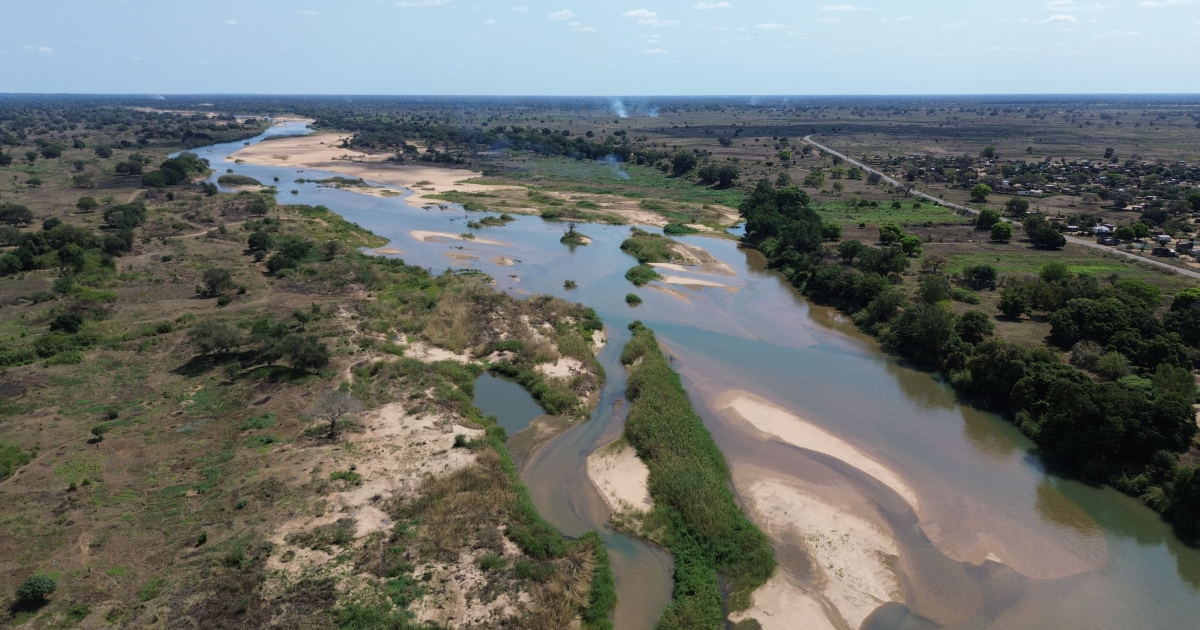Gordon O’Brien tells good fish stories. Like the one about tigerfish catching swallows in mid-air. For years and years rumours rippled among anglers and fish-spotters that fish were plucking birds out of the sky. Then, a decade ago, O’Brien and his post-graduate students were working on a fish behaviour study and managed to get video proof at Schroda Dam in the Mapungubwe National Park on the Limpopo River.
“It was unbelievable. The tigerfish were effectively catching the birds. We didn’t know what was going on, even though it was madness, it was crazy.” Tigerfish, introduced to the dam, which is within their natural distribution, was a part of a conservation effort. Tigerfish tend to feed on other fish, amphibians and invertebrates. The fact that they are actively fishing for feathered prey suggests to O’Brien, who is an Associate Professor and Senior Research Fellow in Water Science at Charles Sturt University, Gulbali Institute, that their food sources are limited. It could be the pressure to hunt, he says, that’s pushing them to take the risk of trawling close to the surface of the water looking for flying birds.
O’Brien’s interest extends way beyond this tigerfish catching swallows international headline-grabbing phenomenon, to understanding the river ecosystems of the length of 1750km of the Limpopo River, and the lattice-work of rivers and the life that they support. However, the artery of the Limpopo and the intricate linkages between river systems is now a shattered mosaic, cut by dams, choked by pollution, drained of water and life.
To measure the health of the Limpopo River and the impact of human activity on it, O’Brien is the beneficiary of the R4,5 million Oppenheimer Endowed Limpopo Basin Biodiversity Conservation Fellowship facilitated by Oppenheimer Generations Research and Conservation. The three-year project was launched at Skukuza with South African National Parks, local ministry representatives and Australian representatives in the Kruger National Park on March 4. To better understand the biodiversity of the Limpopo River, including its fish, O’Brien and his team will be working on fish movement, where researchers will tag and track fish and analyse ear bones (otoliths) of migratory fish to map migration patterns. They will also study species diversity using environmental DNA collected from water and sediment from sites throughout the basin, and how aquatic plants and animals interact in the ecosystem over time.
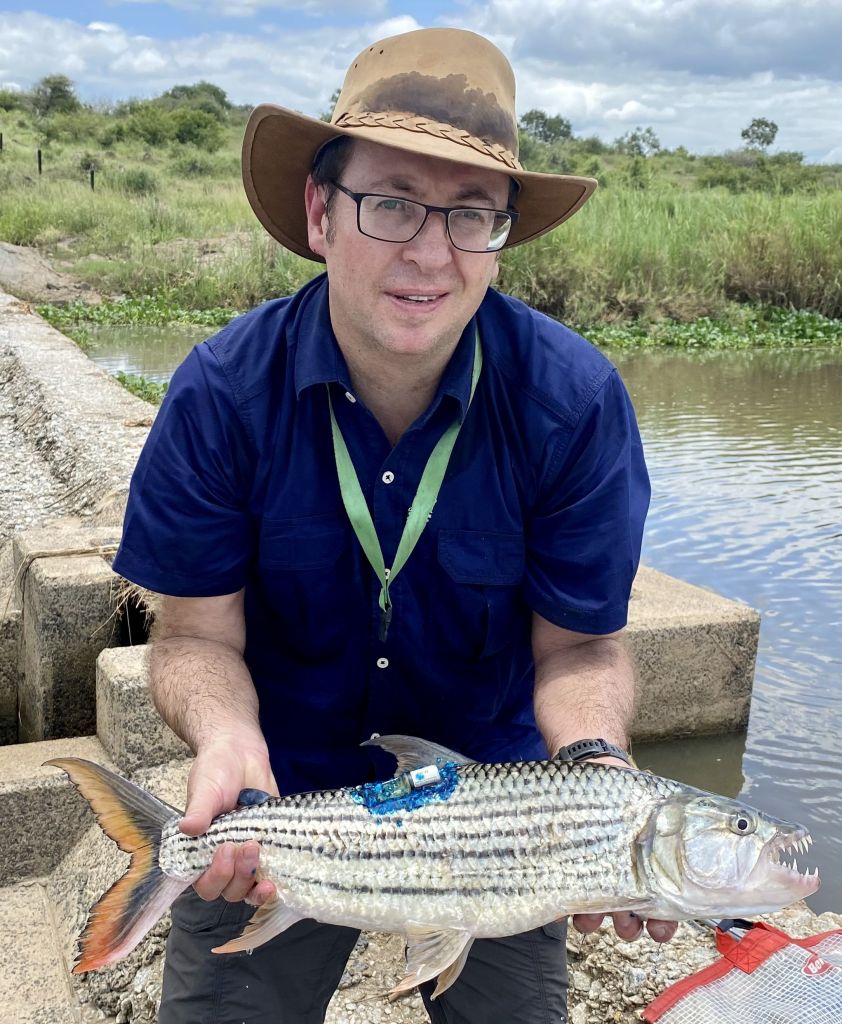
Of the rivers in southern Africa that drain into the Indian Ocean, the Limpopo is second in size only to the Zambezi River. From its source where the Marico and Crocodile rivers merge, it flows through Botswana, Zimbabwe, South Africa, and Mozambique, a geographic fact which makes conservation along it particularly difficult. O’Brien and his team are working with different stakeholders across the region, different legislations amongst different countries, multiple land use activities and threats to rivers, and a high diversity of people in urban and rural areas with different needs across the basin.
How much does it still resemble Rudyard Kipling’s turn-of-the-20th century description of it as the “great grey-green, greasy Limpopo River”? That depends, says O’Brien. Its perennial flow has been disrupted, and now it can change dramatically between seasons and locations. Up in Mapungubwe, and in other areas “especially in Mozambique”, the water can run crystal clear, especially during low flow, usually winter periods. In summer, during high rainfall periods in particular, the rivers can look very different. O’Brien notes that overall, “the Limpopo is a highly mobile alluvial river, carrying vast amounts of sediment through its system”, shifting and depositing sands in a continuous, restless process.
Which brings him to another fish story. One of the greatest indicators of the river’s health is the fate of its migratory species. “We’ve got four Anguillid eel species in the Limpopo Basin, and they’re very special. They spawn off Madagascar in the Indian Ocean and the transparent leaf shape larval, glass eels drift back to the east coast of Africa. They change into small spaghetti like elvers and actively migrate up rivers” to the heart of southern Africa’s river systems in a migration pattern woven into the continent’s watery veins. “Then when they’re adults, they return to the Ocean. We’ve now found out that anguillid eels can live for over 100 years, and so some of them were here before our dams were built.” We think that most of our eels return to the Indian Ocean as Silver eels long before 100 years, but we know very little about this.
Unfortunately “we’re finding fewer and fewer of them now. And once they’re gone, they’re gone. They never return because they can’t get back,” says O’Brien. For millennia, this migration was arduous but achievable, some eels have climbed up waterfalls like the Victoria Falls. But today, the journey is an almost impossible obstacle course, and the eels that do survive the gauntlet to maturity face new pressures from people who are targeting them for the world’s largest trade in animal products, our remaining eels are among the last of their kind.
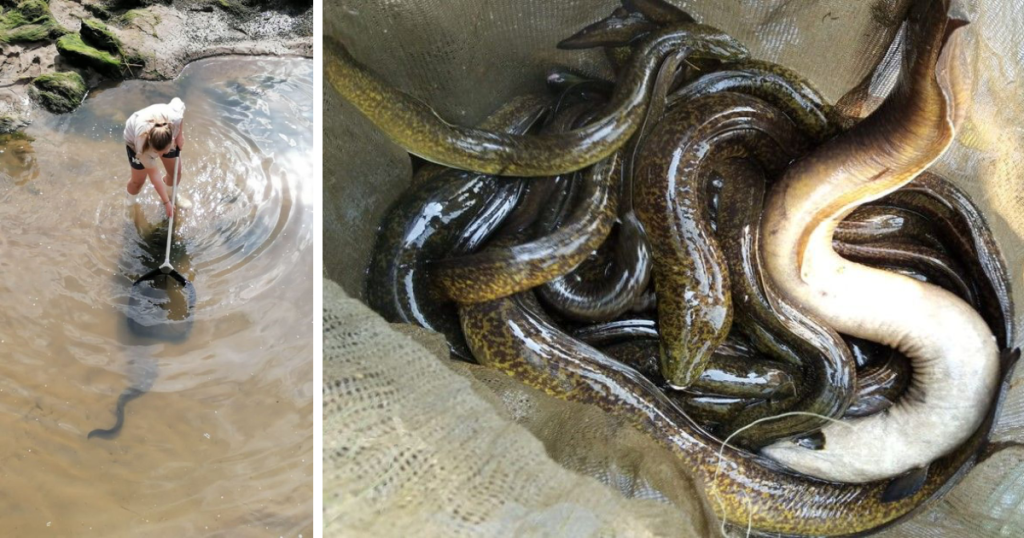
The four nations that share the Limpopo Basin, South Africa, Zimbabwe, Botswana, and Mozambique, have long struggled to balance water resource development and conservation. Water is the lifeblood of industry, agriculture, and human survival. The Olifants River, a major tributary of the Limpopo, has been so heavily exploited for mining and industry that it has been considered one of the hardest-working and most polluted rivers in the world. The Limpopo itself has suffered a similar fate, overused and undervalued, its ecosystems and biodiversity collapsing under the weight of human demands.
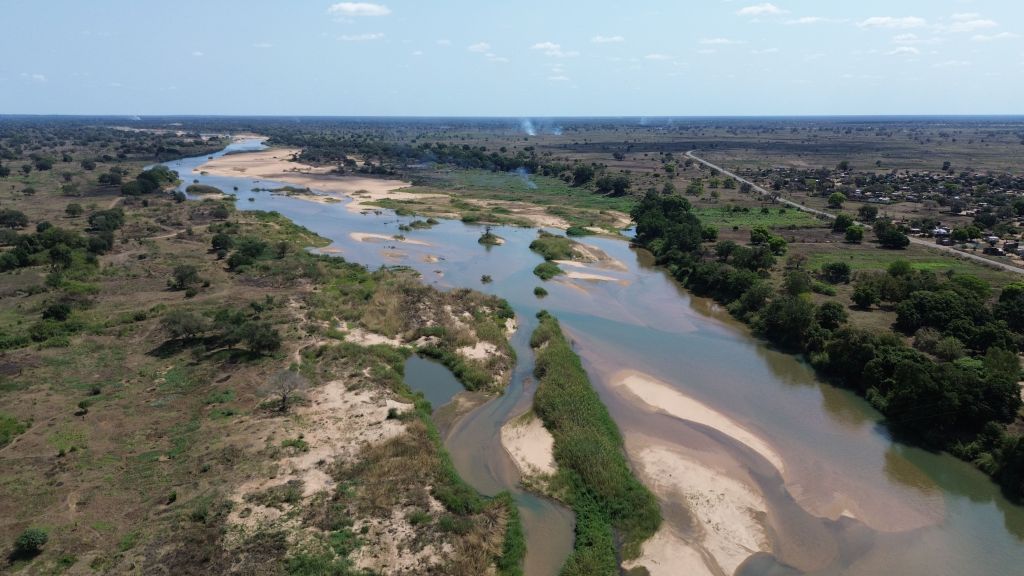
Despite these challenges, there is hope. In the 2000’s, the Limpopo River Commission was formed to address the sustainability of the basin, and it’s declining health. Researchers began assessing how much damage had been done, asking whether the river could ever return to a healthy state. The answer was sobering: while the basin was deeply altered, the natural rainfall and water supply were still sufficient for recovery, if action is taken swiftly.
The Oppenheimer grant aims to complement existing and develop new initiatives to spur on conservation efforts to save the river and species.
“The real question,” says O’Brien, “is to determine not only what’s going on today, but what has happened in the past, and then go find out where our biodiversity is and what they need to survive and re-distribute across the basin. And if we need to step in to support their recovery”.
Towards this there are new methods that scientists like O’Brien can use to find out what species need and help them achieve it. One of the methods is to examine the fish’s ear bones, or more specifically the calcium carbonate structures in their ears called otoliths. “We can take a 70-year-old eel and from its otoliths work out how much of its life it spent in in marine environments, in freshwater environments, and when it returned from the one to the other. Or even, did it go from one river into another rivers within the catchment.”
This is possible, says O’Brien, because the ear bone grows as the fish grows, and can be measured as with tree rings. Not only that, the minerals taken in from surrounding water leave a trace, “and we can also determine where it was based on its chemistry. So that’s the trick, and strontium is the kicker for us. It’s an element that changes its nature in different parts of the catchment, and you can use it as a as a fingerprint to tell where the fish was in the basin at different times”.
Another window into the habits of fish is gleaned from tagging them. “We catch the fish, attach transmitters, which is as fancy as a cell phone but looks like an AA battery and track them.” Remote tracking allows O’Brien to work out where fish go, what and when they do things, where they look for food and other things fish may need to complete their lifecycles. Scientists like O’Brien usually use “indicator species” in their research or species that respond to changes in river conditions. Their approach is to work out the requirements of species, interpret this data into water quality and fiver flows for example and then give this information to managers and other decision makers.
Even the faintest traces of animal genetic material in the water speaks volumes. “We also techniques to sample environmental DNA,” says O’Brien”. “This is a relatively new field where we’re discovering that a lot of the genetic material of animals is shed and moves around in water. By taking water sample, we can look at what species occur in the river.
“We have, for example, new markers for yellowfish, tigerfish and eels, that are unbelievably sensitive. We did some experiments in a 4,000 litre tank with an American Scientist who’s helping us, and within minutes, the DNA had circulated through the whole tank.” Then for about four days after the fish is removed from the tank, we’re still picking up DNA of that fish. It’s remarkable.” This technique is useful “because DNA tells you of the presence of fish that you might not be aware are upstream. We can find out whether we’re missing fish at different locations.”
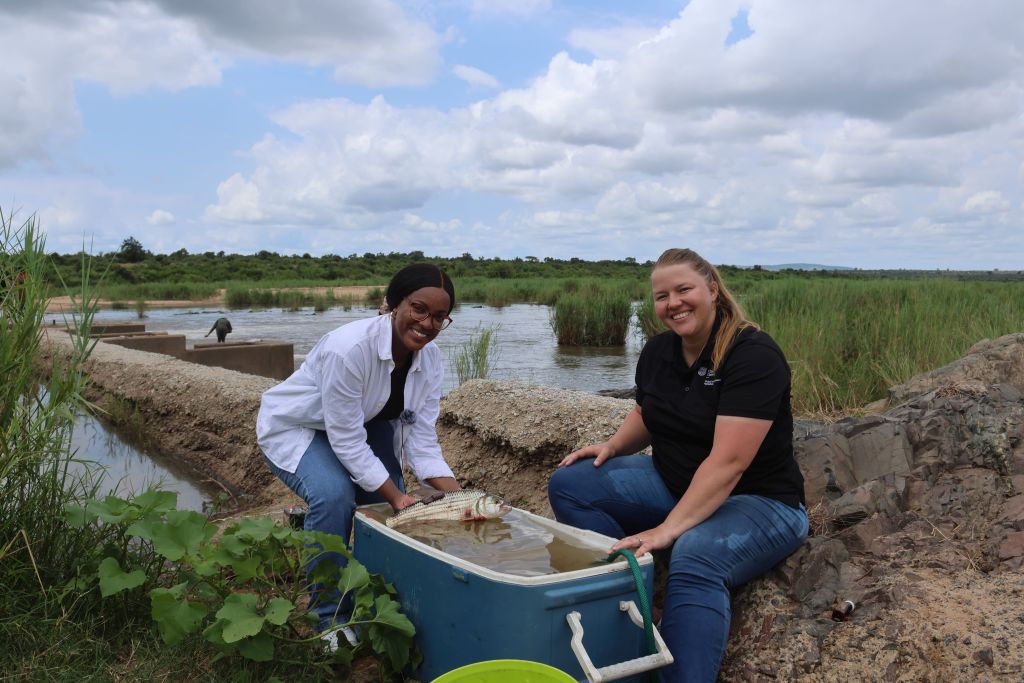
O’Brien says “we are very fortunate because we know (from historical records dating to the 1950s) that we had almost 90 species of freshwater fishes in the Limpopo Basin. We’ve got a pretty good idea of where they were. That is completely changed today.” But while some species no longer occur where they were, some pop up in new places, and this gives O’Brien and his team hope that under the right conditions, populations can recover.
“If we work towards providing enough water to keep the system functioning, we think we can get to an acceptable future balance. There’s a lot of work that needs to be done to get there. But if we leave things as they are with the excessive use, pollution and abuse of the water resources in the basin and we just have two droughts on top of each other, it will destroy what we have left in the basin, and leave us with almost nothing to work with. This will have serios ecological, social and economic implications throughout the region. This is a possible future that we really don’t want.”
To avoid a dark and foreboding path, says O’Brien, “we want users to stop abstracting everything from the river. We want to stop the industries from polluting the rivers to the point of killing organisms in the rivers. We want to show the users how to balance their needs with the needs of the rivers and other users like vulnerable people downstream of them in Mozambique. We want them to change the way that they’re operating in the basin so that they don’t impact the system as much as they are at the moment.” “We’ll always use the river and its resources but we can do it in way that allows the river to remain in a suitably healthy functioning state.”
The Limpopo has always been a river of change. It was once connected to the Zambezi River. Its sediment shifts, its waters rise and fall, its banks expand and contract. Its animals move around in the basin. But now, the change it faces is one of survival. For the eels and tigerfish, mammals, birds, reptiles, amphibians and all of the bugs in the river, time is running out.
O’Brien emphasises that the river is more than just water; it is a lifeline for biodiversity and people in the region, a home and a passage for the creatures like the eels that depend on it. And in saving them, the river may yet be saved.


